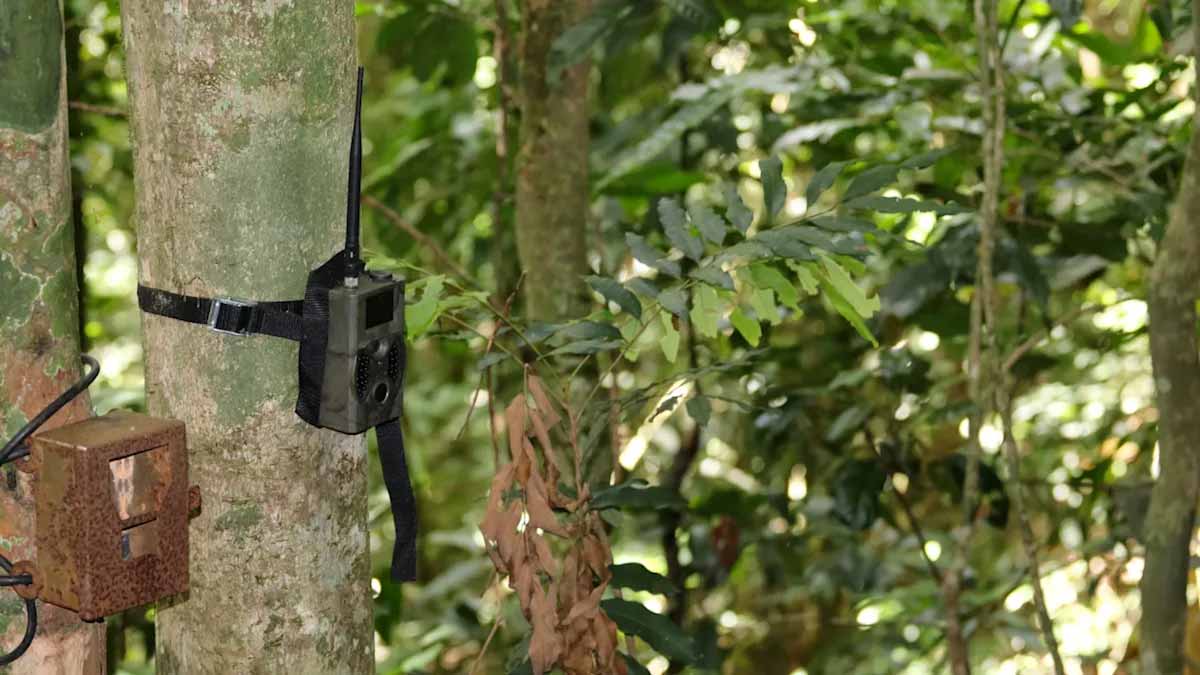A flicker in the undergrowth became a revelation, then hope sharpened into proof. On a protected path, motion sensors blinked and a family stepped into view. The sight was brief, yet it spoke volumes about resilience, recovery, and what survives when forests still breathe. Because cats that hunt the shadows can also light a way forward, this moment now anchors a larger story about protection, patience, and measurable progress.
Why cats at the forest’s apex matter now
Camera traps clicked on Endangered Species Day and recorded a mother with two cubs. The images came from a tropical national park where dense canopy shields shy wildlife. Although similar animals appeared before, none showed a breeding female with two offspring. That “first” signals stability, not luck.
The footage was shared by the Orangutan Foundation on Instagram, amplifying the news. Their caption framed the event as a milestone for a threatened lineage. In that rainforest, patient monitoring has tracked elusive movements. The group noted a low “recruitment rate,” so each surviving youngster becomes vital.
Tanjung Puting National Park in Borneo provides the backdrop and the buffer. Deforestation pressures persist beyond its borders, yet guardianship inside creates room to thrive. Because apex predators shape behavior below them, healthy territory raises every rung of the food web, from insects to prey species.
Field methods that make the invisible visible
Camera traps work because they never blink and never disturb routines. Fitted to trunks and set along game trails, each unit records who passes and when. Researchers can chart populations and distributions without chasing animals. Over months, patterns emerge, and cautious species reveal reliable paths.
In this case, multiple passes confirmed a family shared key routes. The mother moved first, cubs close behind, reading light and scent as maps. Researchers noted not only presence but behavior. While one frame proves existence, a sequence outlines home ranges, rest sites, and safe corridors.
For a species that avoids people, such evidence is gold. The technology tests whether protection holds and whether numbers inch up. Because data arrives stamped with time and location, managers adjust strategy fast. That feedback loop turns images into policy, and it turns policy into survival for cats.
Low recruitment and why every cub counts
These leopards mature slowly compared with many carnivores. Fewer adults than expected raise young to the two-year threshold when breeding becomes possible. As a result, each litter carries more weight. Two cubs alive together suggest the area provides prey, cover, and calm.
The foundation underscored that low recruitment drags growth, even when adults persist. Cubs must survive injuries, parasites, and competition, then avoid snares outside protected lines. Because failure at any step echoes for years, conservationists track early milestones and intervene through habitat security and smarter patrols.
Seeing a mother with two offspring inside the park implies effective management. Rangers, community partners, and scientists align around buffer zones. They also share alerts about logging risks and illegal traffic. When the record shows breeding females succeed, funding follows. That funding, in turn, shields cats when pressure rises.
How protecting habitat lifts cats and people together
Forest integrity does more than shelter iconic spots on a map. It anchors rainfall and soil, supports pollinators, and stabilizes streams. Farmers downstream notice steadier yields. Fisherfolk see clearer water. Because predators regulate herbivores, vegetation rebounds, and seedlings get light.
Top predators also function as a health gauge. When they hunt often and breed, managers infer prey is abundant and disease under control. Conversely, when they vanish, hidden trouble spreads. The park’s new footage flips that script. It highlights a working refuge where reproduction resumes its cycle.
Conservation success scales outward. Connectivity plans stitch fragments with corridors. Community forest agreements reward stewardship. Tourism, when designed carefully, funds ranger posts and research. Each strand weaves into resilience. In that weave, a mother’s path and two light steps behind her tell a future that includes cats.
Public reaction and the power of shared wonder
The Instagram post sparked joy as followers recognized what the frames meant. One wrote, “So happy to see 2 healthy children,” placing human language on wild promise. Another added, “Such a beautiful sight!!” and linked hope to a call: stop destroying habitat so numbers recover.
A third voice called it another threatened species worth every effort. Those small quotes reflect a bigger engine. When people feel connected, they defend places they may never visit. Because attention draws donations and volunteers, shared wonder becomes practical fuel for patrols and studies.
Camera-trap science and public storytelling reinforce each other. Results arrive as images, then spread quickly across feeds and headlines. That speed helps counter losses that also spread fast. As forests fall, messages must rise. The clearest message is movement itself, framed in time, proving cats are still there.
What this milestone asks of us next, and how to answer
Moments like this carry obligations. The species’ slow recruitment demands steady funding and strict protection at edges where risk grows. Rangers need training, fair pay, and equipment. Communities need paths to income that reward trees standing. Because cats survive where forests remain, policies must lock in space.
